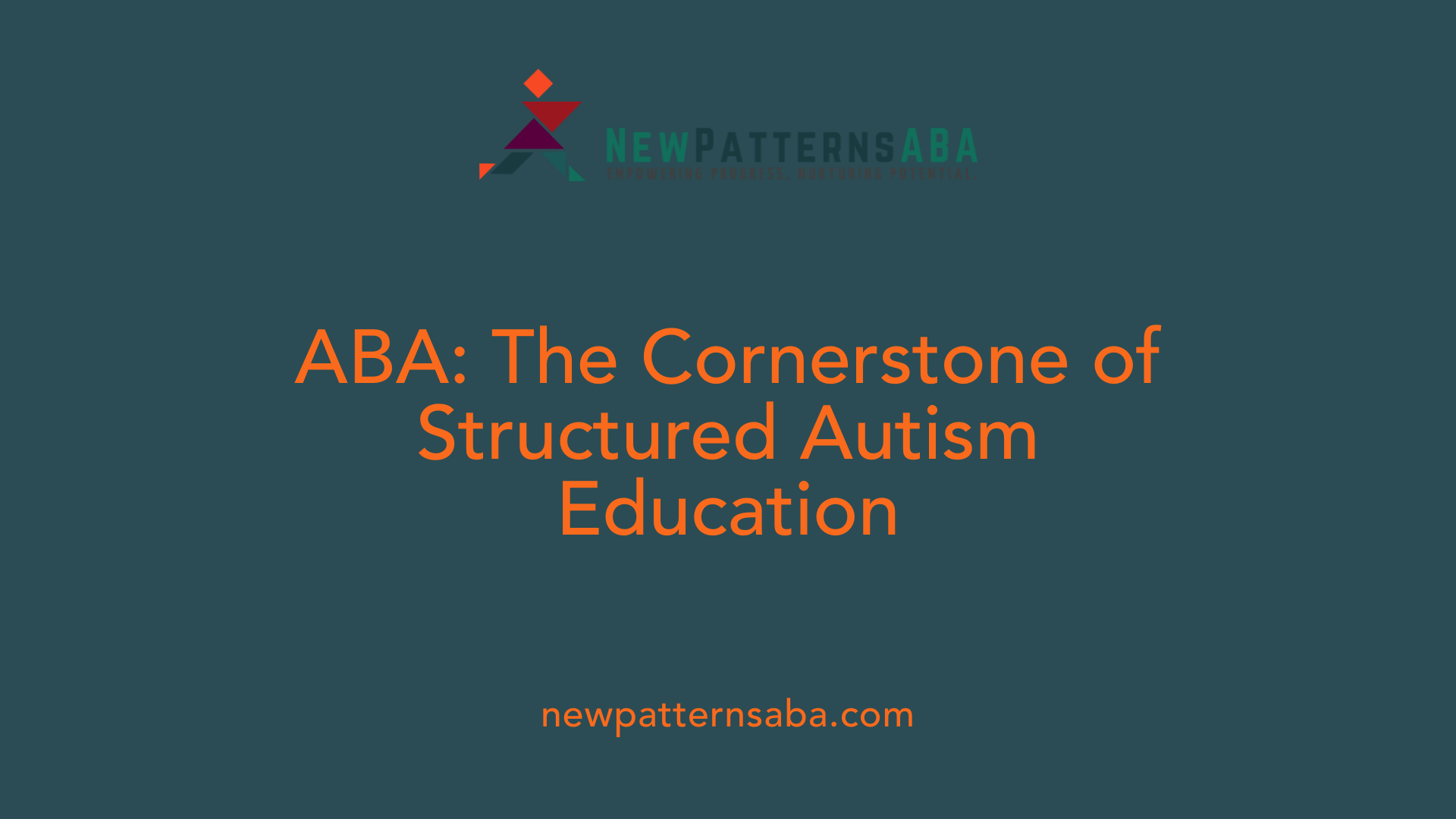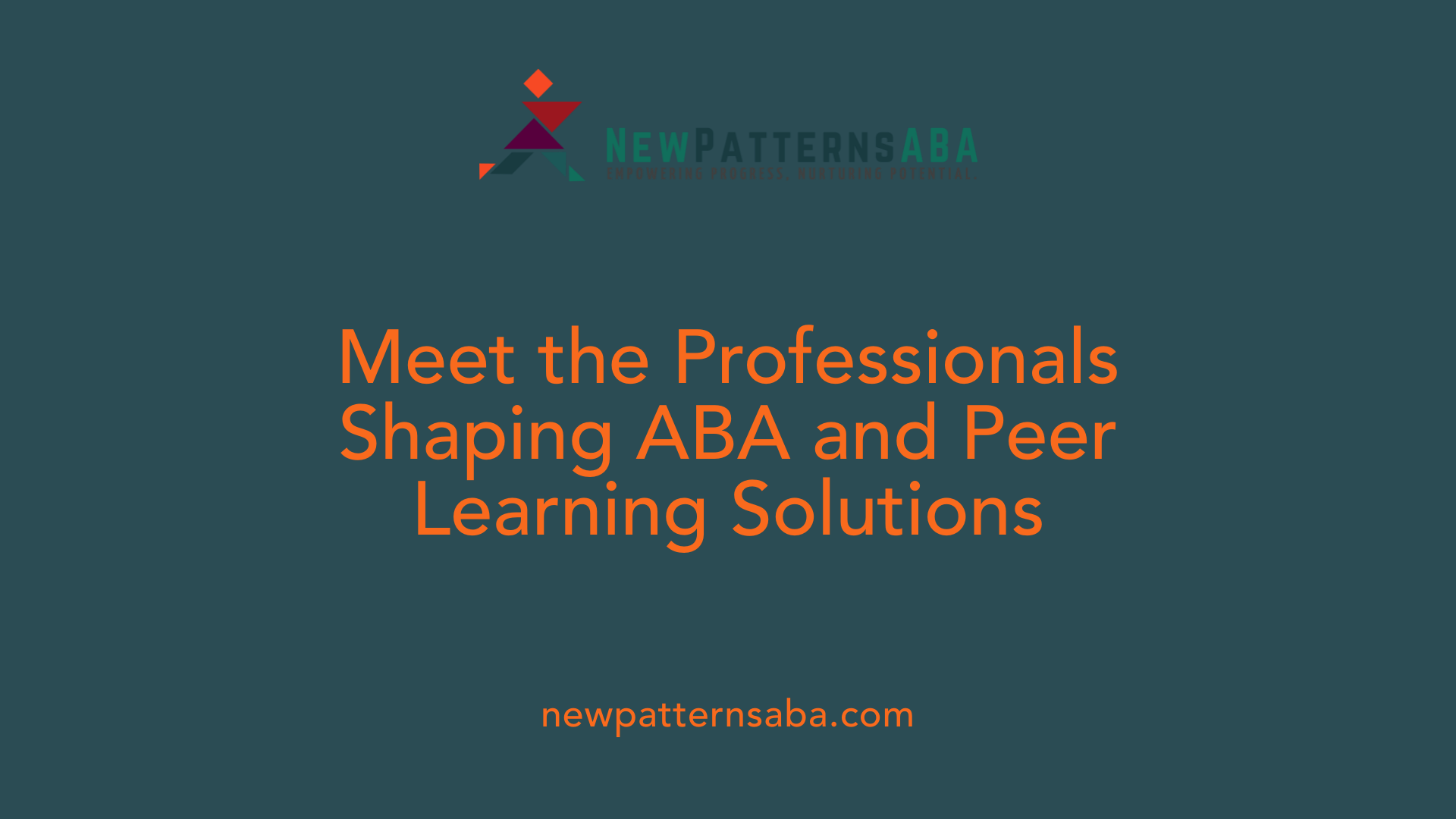Understanding the Synergy Between Peer Learning and Evidence-Based Autism Education
Autism education programs have evolved significantly with evidence-based methodologies like Applied Behavior Analysis (ABA) at their core. Integrating peer learning into these programs not only enhances social interaction but also reinforces critical skills through natural, supportive environments. This article explores how peer learning is effectively utilized within autism education frameworks, highlighting ABA principles, program structures, and professional collaboration to maximize developmental outcomes for students with autism spectrum disorder (ASD).
Applied Behavior Analysis: The Foundation of Structured Autism Education

What is Applied Behavior Analysis (ABA) therapy?
Applied Behavior Analysis (ABA) therapy is a scientifically supported approach aimed at understanding and changing behavior by exploring how environmental factors influence actions. It focuses on encouraging helpful behaviors—like improved communication, social skills, and academic performance—while decreasing problematic behaviors. ABA uses techniques based on analyzing the antecedents (what happens before a behavior), behaviors themselves, and consequences, often applying positive reinforcement to encourage repetition of desired responses.
ABA therapy is individualized, designed by specialists such as Board-Certified Behavior Analysts (BCBAs), and tailored to meet each person's needs. It is widely recognized and endorsed by scientific, governmental, and professional organizations as a safe and effective treatment for individuals with autism spectrum disorder and related conditions.
How does ABA modify behavior and promote skill acquisition?
ABA modifies behavior through systematic observation and application of behavioral principles. By analyzing the Antecedent-Behavior-Consequence (ABC) framework, therapists identify triggers and rewards for behaviors. For example, prompting a child to clear their plate (antecedent), observing their response (behavior), and providing a token or praise (consequence) helps reinforce positive routines.
Positive reinforcement is central to ABA: when behavior is followed by a valued reward, the likelihood of the behavior being repeated increases. This method builds essential skills step-by-step while reducing unwanted behaviors, making learning structured and measurable.
Common ABA techniques used in autism education
- Discrete Trial Training (DTT): Structured, repetitive one-on-one sessions that break down skills into small, manageable parts, using prompts and rewards to facilitate learning.
- Modeling: Demonstrating desired behaviors live or through media examples to help children learn social and communication skills by imitation.
- Picture Exchange Communication System (PECS): Employing picture cards to assist children in expressing needs or ideas, effectively expanding their vocabulary.
- Reinforcement Systems: Utilizing rewards like token economies, where tokens earned for positive behavior can be exchanged for preferred items or privileges.
These techniques are often integrated into educational programs such as the Incredible Years program, which combines visual cues, coaching, and structured teaching approaches like TEACCH to promote language development, social interaction, and self-regulation.
Table: Overview of ABA Techniques
| Technique | Description | Application Example |
|---|---|---|
| Discrete Trial Training (DTT) | Structured sessions with prompts and rewards | Teaching a child to identify colors |
| Modeling | Demonstration of behaviors for imitation | Showing how to greet a peer |
| PECS | Use of pictures for communication | Requesting snacks using picture cards |
| Reinforcement Systems | Rewarding desired behavior with tokens | Earning tokens for completing tasks |
Through such methods, ABA provides a robust foundation for helping children with autism develop essential life skills in structured and supportive environments.
Peer Learning as a Catalyst for Social Skills Development in Autism Education

How Does the Incredible Years Program Incorporate Peer Interactions in Autism Education?
The Incredible Years program actively integrates peer interactions to enrich social skills among preschool children with autism. By structuring activities that promote engagement with peers, the program creates opportunities for children to practice social behaviors in natural settings. This peer-focused approach complements other teaching strategies to foster social competence and reduce isolation.
What Are the Roles of Modeling, Prompting, and Coaching in Teaching Social Behaviors?
Social skills are taught through a combination of modeling, prompting, and coaching. Modeling involves demonstrating appropriate social interactions either live or via media, offering clear examples for learners. Prompting then guides children in initiating or responding to social exchanges. Coaching supports ongoing refinement and encouragement, helping children internalize skills and apply them independently. These layered approaches provide repeated, supportive experiences that build confidence and competence.
How Does Peer Learning Support Self-Advocacy and Communication Skills?
Peer learning creates a natural context for children to develop self-advocacy by encouraging them to express their needs and preferences within social groups. Interaction among peers promotes communication practice, helps build vocabulary, and enhances emotional literacy. Through guided peer engagements, children gain skills essential for fostering autonomy and social connection, which are foundational for inclusive education and lifelong success.
Integrating Visual Supports and Structured Teaching for Inclusive Classrooms

How Are Visual Supports Like Cue Cards and Posters Used?
The Incredible Years program incorporates visual supports such as cue cards and posters, which are widely recognized as effective tools in autism interventions. These visual aids provide clear, concise prompts that help children with autism understand classroom routines and expectations. The simplicity of visual cues reduces anxiety by offering predictable and structured information, enabling learners to navigate their environment with greater confidence.
What Is TEACCH’s Structured Teaching Model and How Does It Align with ABA?
TEACCH’s Structured Teaching model focuses on organizing the environment and materials in a way that promotes independence and skill acquisition in children with autism. It emphasizes visual schedules, work systems, and clearly defined physical boundaries. This approach is compatible with ABA strategies used in the Incredible Years program, such as positive reinforcement and behavior analysis. Together, they create a cohesive framework that supports both structure and flexibility tailored to individual student needs.
How Do Tailored and Straightforward Supports Help Reduce Anxiety and Enhance Engagement?
Tailored supports in the classroom are designed to meet the specific strengths and challenges of each child, using straightforward instructions and visual aids to clarify expectations. This reduces confusion and frustration, common triggers for anxiety. By fostering a transparent learning environment, these supports enhance engagement and encourage self-regulation. Students feel more comfortable interacting with peers and participating in classroom activities, promoting inclusive education.
| Strategy | Description | Benefit |
|---|---|---|
| Visual Supports (Cue Cards, Posters) | Use visual cues to explain routines and behaviors | Lower anxiety, improve understanding |
| TEACCH Structured Teaching | Organizes environment with clear systems and schedules | Promotes independence and consistent learning |
| Tailored Supports | Customized visual and instructional aids | Boosts engagement and reduces confusion |
The Role of Professionals in Delivering and Supporting ABA-Based Peer Learning Programs

Who typically provides ABA therapy services?
ABA therapy services are usually delivered by a team of trained and certified behavior analysis professionals. These often include Board Certified Behavior Analysts (BCBAs), who are responsible for designing and supervising treatment plans tailored to the individual needs of children with autism. Alongside them, Board Certified Assistant Behavior Analysts (BCaBAs) and Registered Behavior Technicians (RBTs) implement the interventions in various settings like homes, schools, and clinics.
Specialized organizations such as Beacon ABA Services and the Leafwing Center employ these professionals to ensure comprehensive, evidence-based care. Additionally, training sessions for caregivers and family members often form a core part of the service, fostering consistency across environments and promoting ongoing progress.
What qualifications do professionals providing ABA therapy usually have?
Professionals offering ABA therapy typically have rigorous certifications to ensure quality care. BCBAs hold advanced degrees in psychology or education along with specialized ABA training, enabling them to develop, oversee, and evaluate individualized behavior intervention programs. RBTs, who assist in intervention delivery, complete specific coursework and supervised practical experience.
Licensure requirements depend on state regulations but generally emphasize knowledge and skills in behavioral principles, assessment methods, data collection, and behavior management. This training enables them to adapt strategies like token economies, Discrete Trial Training (DTT), and the Picture Exchange Communication System (PECS) effectively to support social and communication skill development.
How do collaboration and ongoing professional development support autism education?
Collaboration with families is essential for ABA programs, ensuring interventions remain consistent across home and educational settings. The Incredible Years program exemplifies this by providing tools like manuals, visual aids, and interactive materials such as puppets and DVDs to support teacher training and family involvement.
Ongoing professional development is emphasized to keep educators and therapists updated on the latest evidence-based techniques. This includes training on structured teaching models and behavior analysis methods aligned with broad recommendations from respected agencies such as the CDC and the American Psychological Association.
| Aspect | Description | Importance |
|---|---|---|
| Qualifications | Certified roles like BCBA, BCaBA, RBT with relevant degrees and training | Ensures expertise in behavioral science and ethical practice |
| Service Providers | Specialized centers, schools, home providers, multidisciplinary teams | Deliver evidence-based ABA therapy in varied environments |
| Collaboration with Families | Training and materials to involve caregivers consistently | Promotes generalization and continuity of skills across settings |
| Professional Development | Regular updates and training on ABA and structured teaching methods | Maintains high-quality, up-to-date intervention implementation |
This structured approach led by qualified professionals makes ABA-based peer learning programs effective in fostering skill development, emotional understanding, and social interaction among children with autism.
Measuring Effectiveness and Addressing Behavioral Challenges Through ABA in Peer Settings

What types of behavioral issues can ABA therapy address?
ABA therapy effectively targets a broad spectrum of behavioral challenges seen in individuals with autism, including difficulties in communication, social interactions, and disruptive behaviors. It helps reduce problematic behaviors such as repetitive movements, tantrums, and aggression. Meanwhile, it promotes positive development in language, daily living skills, and social competencies. Techniques like positive reinforcement and the Antecedent-Behavior-Consequence (ABC) method are used to systematically understand and modify behaviors, making interventions highly personalized to individual needs. The approach facilitates improvements across various environments, including peer learning settings, by encouraging desirable behaviors and reducing negative ones.
How is the effectiveness of ABA therapy measured?
Effectiveness is measured through rigorous data collection and ongoing progress evaluations against specific goals, allowing practitioners to adjust interventions to individual progress. Tools such as the BHCOE ABA Outcomes Framework™ standardize outcome measurements, providing reliable comparisons across different patients and providers. The Patient Outcome Planning Calculator (POP-C) supports practitioners in determining the necessary treatment intensity and environment, especially beneficial for less experienced therapists. This structured evaluation process ensures that ABA therapy consistently delivers meaningful improvements and remains aligned with best practices.
How are positive reinforcement and ABC analysis used in peer learning contexts?
In peer settings, ABA utilizes positive reinforcement systems like token economies to encourage desired behaviors during social interactions. By rewarding behaviors such as cooperation, sharing, and self-regulation, children become motivated to repeat these actions. The ABC approach helps teachers and therapists identify triggers (antecedents) and consequences surrounding behaviors, enabling targeted interventions. Modeling and prompting are also incorporated, supporting the development of social skills and self-advocacy in group environments. This makes ABA well-suited to enhance peer engagement and adaptive behaviors in educational programs.
ABA's structure and evidence-based measurement approaches make it a powerful tool for addressing behavioral challenges and promoting skill growth within peer contexts.
Maximizing Outcomes with Peer Learning and ABA in Autism Education
The integration of peer learning strategies with evidence-based ABA therapies offers a powerful framework for supporting individuals with autism spectrum disorder in educational settings. By fostering social interaction, communication, and self-regulation through structured, visual, and reinforced activities, programs like The Incredible Years and TEACCH demonstrate how these approaches can increase engagement and skill mastery. Qualified professionals play a crucial role in delivering and continually refining interventions, ensuring that behavioral challenges are addressed sensitively and effectively. Measuring progress with standardized tools ensures accountability and success in achieving meaningful outcomes. Ultimately, utilizing peer learning within ABA-driven autism education programs helps create inclusive classrooms that nurture growth, independence, and social connection for students with autism.
References
- Effective Classroom Strategies for Teaching Students with ...
- ABA Therapy Examples, Definition & Techniques
- Neurobehavioral Unit (NBU)
- Applied Behavior Analysis (ABA)
- Who Qualifies for ABA Therapy: Eligibility Guide
- How to Become an Applied Behavior Analyst (ABA) Therapist
- Applied Behavior Analysis (ABA)
- Applied Behavior Analysis (ABA)
- Applied Behavior Analysis





